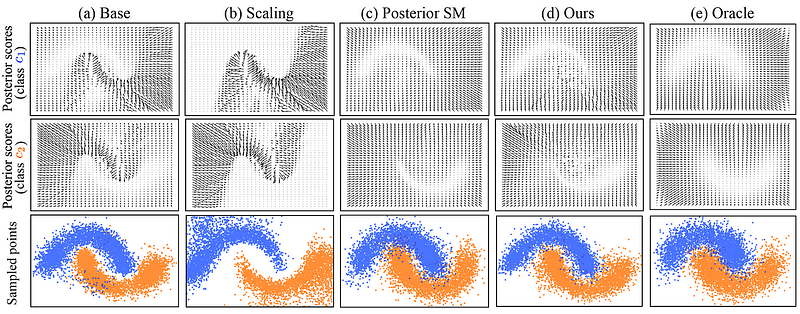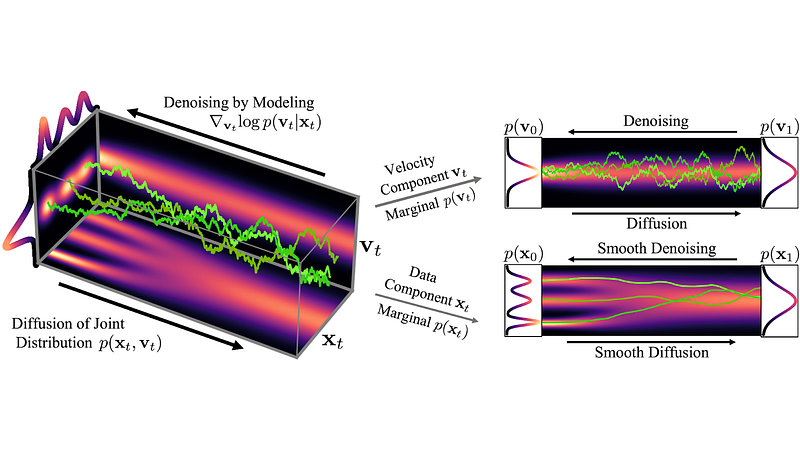Explain Denoising Score Process Matching(DSM)
Explain Denoising Score Process Matching(DSM)
Easy:
Imagine you have a big box of mixed-up toys. Some toys are broken, some are missing pieces, and others are just plain dirty. Your job is to sort these toys so that each toy is clean, fixed, and ready to play with. This process is similar to what we call Denoising Score Process Matching (DSM).
In DSM, computers help us do something very special: they look at a bunch of pictures or sounds and try to find the best match even if it’s been changed or messed up in some way. It’s like finding the perfect puzzle piece that fits into your mixed-up picture.
Here’s how it works:
- Collecting Information: First, the computer collects lots of examples of what it should be looking for. For example, if we’re trying to fix a noisy sound, the computer might listen to many clear, high-quality versions of the same sound.
- Learning Patterns: Next, the computer learns from these examples. It figures out what makes them good and tries to apply those rules to other things it sees. It’s like learning how to draw by copying lots of drawings until you can make your own.
- Finding the Best Match: Now, when the computer gets a new, messy sound or picture, it uses what it learned to figure out how to fix it. It looks for patterns in the mess that remind it of the clear examples it studied. Then, it tries to “undo” the mess based on what it knows about making things clear and nice.
- Making Things Better: Finally, the computer applies its knowledge to make the messy sound or picture better. It’s like having a magic wand that cleans and fixes everything it touches!
So, in simple terms, Denoising Score Process Matching is like having a super-smart helper that learns how to make anything better, whether it’s fixing a broken toy, cleaning a dirty picture, or making a noisy sound clear again.

Moderate:
Denoising Score Process Matching (DSM) is a sophisticated technique used in signal processing and machine learning to improve the quality of data that has been corrupted or degraded in some way. The goal of DSM is to restore the original, clean version of the data from its noisy or distorted form. This process is particularly useful in various fields such as audio engineering, image restoration, and medical imaging, where preserving the integrity of the data is crucial.
How Does DSM Work?
The process of Denoising Score Process Matching involves several steps, which can be broadly categorized into training and inference phases.
Training Phase
- Data Collection: In this phase, a large dataset of clean and corresponding noisy signals or images is collected. The clean data serves as the target, and the noisy data represents the input that needs to be processed.
- Model Learning: A model is trained using the collected data. The model learns to map noisy inputs to their clean counterparts by identifying patterns and features that distinguish clean data from noise. This is typically achieved through deep learning techniques, where the model architecture is designed to learn complex representations of the data.
- Loss Function Optimization: During training, the model’s predictions are compared to the actual clean targets using a loss function. The model adjusts its parameters to minimize this loss, effectively learning to denoise the data more accurately over time.
Inference Phase
- Input Data Preparation: When new, noisy data comes in, it is prepared for processing. This may involve formatting the data to match the requirements of the model.
- Prediction: The prepared data is fed into the trained model, which then attempts to predict the clean version of the data based on what it has learned during training.
- Output: The model outputs the predicted clean data, which ideally closely resembles the original clean data before any degradation occurred.
Key Components
- Deep Learning Models: These models, such as convolutional neural networks (CNNs) for images or recurrent neural networks (RNNs) for sequences, are fundamental to DSM. They are capable of learning hierarchical feature representations from the data, which aids in effective denoising.
- Loss Functions: Commonly used loss functions include Mean Squared Error (MSE) for regression tasks or cross-entropy for classification tasks. The choice of loss function depends on the nature of the data and the specific goals of the denoising process.
- Training Data: The quality of the denoising process heavily relies on the diversity and size of the training data. More varied and larger datasets generally lead to better performance.
Applications
DSM finds applications in various domains including:
- Audio Processing: Enhancing the quality of music tracks or voice recordings by reducing background noise.
- Image Restoration: Restoring old photographs or enhancing images captured under poor lighting conditions.
- Medical Imaging: Improving the clarity of medical scans to aid in diagnosis and treatment planning.
In summary, Denoising Score Process Matching is a powerful tool in the field of data processing, leveraging advanced machine learning techniques to recover clean, high-quality data from its degraded forms.

Hard:
Denoising Score Matching (DSM) is a powerful technique in machine learning that focuses on generative modeling and data denoising. It involves training a neural network to estimate the score (gradient of the log probability) of a data distribution and then using techniques like Langevin dynamics to sample from the assumed data distribution. DSM has shown promising results in various applications, such as image generation, audio synthesis, and representation learning.
Key Concepts
- Noise Addition: Adding noise to the data to create a corrupted version.
- Denoising: Training a model to remove noise from the corrupted data and recover the original data.
- Score Matching: Training a model to match the score (gradient of the log probability) of the true data distribution.
- Denoising Score Matching (DSM): Combining denoising and score matching to train a model that can both denoise data and estimate the score of the data distribution.
Process
- Noise Addition: Add noise to the original data to create a corrupted version.
- Denoising: Train a model to denoise the corrupted data and recover the original data.
- Score Matching: Train the model to match the score (gradient of the log probability) of the true data distribution.
- DSM Objective: Define the denoising score matching objective, which involves minimizing the difference between the model’s score and the true score of the data distribution.
- Training: Train the model using the DSM objective, which helps the model learn to denoise data and estimate the score of the data distribution.
Applications
- Image Generation: DSM has been used to generate high-quality images.
- Audio Synthesis: DSM has been applied to audio synthesis tasks.
- Representation Learning: DSM has been used to learn representations of data that are useful for various tasks.
Advantages
- Improved Likelihood Performance: DSM has shown better likelihood performance on synthetic data and CIFAR-10.
- Manual Control of Detail: DSM allows for manual control of the level of detail encoded in the representation.
- Improved Semi-Supervised Image Classification: DSM has been used to improve semi-supervised image classification.
Recent Advancements
- High-Order Denoising Score Matching: This method enables maximum likelihood training of score-based diffusion ODEs, resulting in better likelihood performance.
- Diffusion-Based Representation Learning: This method allows for manual control of the level of detail encoded in the representation and improves semi-supervised image classification.
- Estimating High-Order Gradients: This method leads to more efficient and accurate approximations of second-order derivatives, improving the mixing speed of Langevin dynamics.
Practical Applications
- Image Denoising: DSM has been used to train energy-based models that exhibit high-quality sample synthesis in high-dimensional data.
- Image Inpainting: DSM has been employed to achieve impressive results in image inpainting.
- Company Case Studies: DSM has been utilized by tech firms to develop advanced generative models for various purposes, such as enhancing computer vision systems and improving the quality of generated content.
Relationship to Energy-Based Models
DSM is closely related to energy-based models (EBMs) as it provides a way to train these models without explicitly computing the likelihood of the data. EBMs define a scalar energy function for each data point, and the goal is to learn the parameters of this function such that low energy is assigned to observed data points and high energy to unlikely data points. DSM trains the model to match the score (gradient of the log probability) of the true data distribution, which can be used to generate new samples from the distribution and perform tasks like denoising and inpainting.

Comments
Post a Comment